The Prague Prophesy
Home Page / Angelique Home / Reviews / Book 13
"Beware Prague ........"
Not much to go on really, is it, when you think about it? Of all the adventures Joffrey de Peyrac has already undergone, not least being burnt at the stake in the Place de Grève at the conclusion of the first part of Book 1 - 'Angélique - Marquise des Anges', he is told to 'Beware Prague'.
What could possibly be waiting to trip him up in Prague?
Analysing what we know so far, this action is likely to occur sometime after 1681 (the end of 'La Victoire d'Angélique') and before 1685 when the Revocation of the Edict of Nantes takes place.
Why would this time frame be significant in Prague. The answer might lie with the legacy of Rudolf II (1576-1612) who brought mysticism and the occult to Prague.
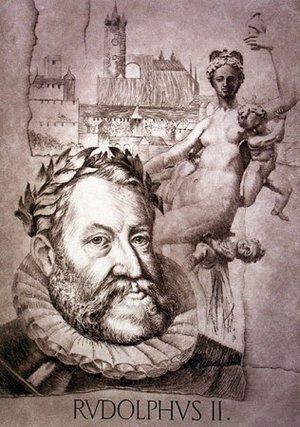
Rudolf II alternative portrait - - courtesy of bohemia-apartments
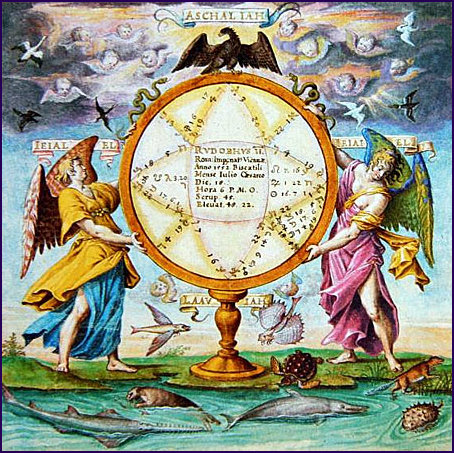
Rudolf was not afraid to have his horoscope cast as can be seen from the image above - courtesy of bohemia-apartments
"Rudolf II ** ― Habsburg heir, Holy Roman Emperor, king of Hungary, Germany, and the Romans―is one of history's great characters, and yet he remains largely an unknown figure. His reign (1576–1612) roughly mirrored that of Queen Elizabeth I of England, and while her famous court is widely recognized as a sixteenth century Who's Who, Rudolf 's collection of mathematicians, alchemists, artists, philosophers and astronomers―among them the greatest and most subversive minds of the time―was no less prestigious and perhaps even more influential.
Driven to understand the deepest secrets of nature and the riddle of existence, Rudolf invited to his court an endless stream of genius―Danish astronomer Tycho Brahe, German mathematician Johannes Kepler, English magus John Dee, Francis Bacon, and mannerist painter Giuseppe Arcimboldo among many others. Prague became the artistic and scientific centre of the known world―an island of intellectual tolerance between Catholicism, Protestantism, and Islam."
Quite a write up! Taken from 'The Magic Circle of Rudolf II: Alchemy and Astrology in Renaissance Prague by Peter Marshall'.
Joffrey was born around 1620 (if he is 18 years older that Angélique whose year of birth is established as 1638) and had an appalling childhood much of which was spent recovering from wounds and disabilities inflicted on him at an early age. We know he is sublimely intelligent, educated and well-read - much of his education may well have been based on the teachings of that august body of men that Rudolf II had surrounded himself with as they were all prolific publishers of theory! He will also, undoubtedly have had access to the writings of Copernicus (1473-1543) and near contemporary Galileo (1564-1642) although the latter was considered too heretical for the Catholic Church. I don't think that would have unduly concerned Joffrey de Peyrac. It wouldn't surprise me if as twenty-something (or earlier) Joffrey had not sought him out and become a pupil!
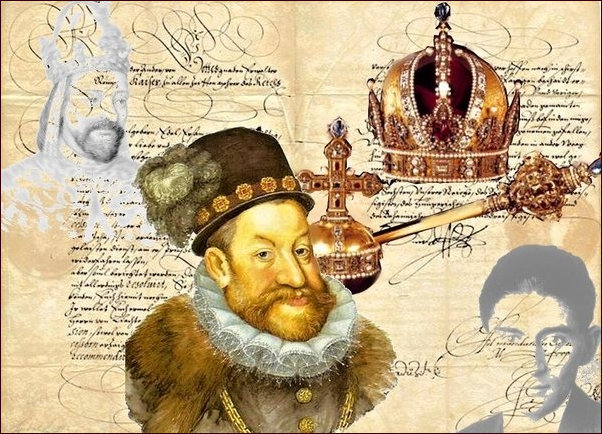
A flamboyant character as can be seen from this historical montage courtesy of bohemia-apartments
If they had lived at the same time Joffrey and Rudolf would surely have been drawn to each other in the light of this description of Rudolf which echoes that of what we know of Joffrey de Peyrac - "Rudolf was an intelligent and gifted man. He could easily speak and write Spanish, German, French, Latin, Italian and a little Czech." Both were linguists, scientists, geologists, scholars, mathematicians, problem solvers, inventors, astrologers - twin minds a generation apart.
The Voynich Manuscript Update* 2019 followed by the Voynich 'Downdate'
2019 exploded with the news that the Voynich Manuscript code had been 'cracked' a fact even Alan Turing (soon to be the face of the new £50 note in the UK) had not accomplished!
Mark Carney, Governor of the Bank of England, commented: “Alan Turing was an outstanding mathematician whose work has had an enormous impact on how we live today. As the father of computer science and artificial intelligence, as well as war hero, Alan Turing’s contributions were far ranging and path breaking. Turing is a giant on whose shoulders so many now stand.” - Wording and image courtesy & © of the Bank of England
Equally quickly the research was dismissed by the academics and so we remain none the wiser! For those interested - the research can be looked at in .pdf format which I rescued from the internet!
*World's most mysterious text is finally cracked: Bristol academic deciphers lost language of 600-year-old Voynich manuscript to reveal astrological sex tips, herbal remedies and other pagan beliefs
- An academic has succeeded where countless cryptographers, linguists and computer programs have failed
- One of the world's most mysterious texts the Voynich manuscript has been de-coded by Dr Gerard Cheshire
- The Voynich manuscript is a handwritten, illustrated text from the 15th century which uses a Proto-Romance
- Among those who have attempted to crack the code are Alan Turing and his colleagues at Bletchley Park
By Victoria Bell For Mailonline |Published: 15 May 2019 | Updated: 15 May 2019
- For 600 years it has steadfastly refused to give up its secrets and has beaten some of the world's most brilliant brains, including Alan Turing.
- Experts variously claimed that the Voynich manuscript - known as the 'world's most mysterious text' - contained codes, magic spells, alien messages and even communist propaganda.
Eventually most agreed that it was either impossible to solve or else written in gibberish as an elaborate practical joke. But a linguistics expert from the University of Bristol has now cracked it - and it took him just two weeks. Dr Gerard Cheshire worked out that it was written in a dead language - proto-Romance - and then by studying symbols and their descriptions he deciphered the meaning of the letters and words. He discovered that the manuscript contains information on herbal remedies, therapeutic bathing and astrological readings about sex, matters of the female mind and parenting. It was written in accordance with the Catholic and Roman pagan religious beliefs of the time and has been carbon-dated to around the mid-15th century. Dr Cheshire discovered that it was compiled by Dominican nuns as a source of reference for Maria of Castile, Queen of Aragon, who is the great aunt to Catherine of Aragon. There are also images of Queen Maria (1401–58) and her court conducting trade negotiations whilst bathing as well as many other images of naked women bathing. It demonstrates that the spa lifestyle was highly regarded as a form of physical cleansing and spiritual communion, as well as a general means of relaxation and leisure. Also within the manuscript is a foldout illustrative map that helped Dr Cheshire to date and locate the origin of the manuscript. The map tells the story of a rescue mission, led by the Queen of Aragon, to save the victims of a volcanic eruption in the Tyrrhenian Sea in 1444 off the western coast of Italy.
The Voynich manuscript, named after Wilfrid M Voynich, a Polish book dealer who bought the manuscript in 1912, was written in Central Europe in around the 15th century, according to academics. Its date, origin and language have been debated as vigorously as its puzzling drawings and undeciphered text featuring botanical and scientific drawings. Among those who have famously attempted to crack the code are Alan Turing and his colleagues at Bletchley Park and the FBI during the Cold War. Proto- Romance is ancestral to today's 'Romance' languages including Portuguese, Spanish, French, Italian, Romanian, Catalan and Galician. Some of the symbols were unfamiliar to scholars studying the text because they have different geographical origins or because they have different variants which indicate particular phonetic accents. The language was ubiquitous in the Mediterranean during the Medieval period, but it was seldom written in official or important documents because Latin was the language of royalty, church and government. 'I experienced a series of 'eureka' moments whilst deciphering the code, said Dr Cheshire. This, he said, was followed by a sense of 'disbelief and excitement' when he realised the magnitude of the achievement, both in terms of its linguistic importance and the revelations about the origin and content of the manuscript. 'What it reveals is even more amazing than the myths and fantasies it has generated.
HOW 'PROTO-ROMANCE' LANGUAGE WORKS
The alphabet of the 'Proto-Romance' language used in the Voynich manuscript runs from A to Z just like our modern Italic alphabet does. It uses a number of unfamiliar symbols alongside more familiar symbols. It has no dedicated punctuation marks – but some of the letters have symbol variants to indicate punctuation. And some of the symbol variants indicate phonetic accents. All of the letters are in lower case and there are no double consonants. There are instances where Latin stock-phrases are used and abbreviated by initial letters. 'It is also no exaggeration to say this work represents one of the most important developments to date in Romance linguistics. 'The manuscript is written in proto-Romance - ancestral to today's Romance languages including Portuguese, Spanish, French, Italian, Romanian, Catalan and Galician. 'The language used was ubiquitous in the Mediterranean during the Medieval period, but it was seldom written in official or important documents because Latin was the language of royalty, church and government. 'As a result, proto-Romance was lost from the record, until now.' The next step is to use this knowledge to translate the entire manuscript and compile a lexicon, which Dr Cheshire acknowledged will take some time and funding, as it comprises more than 200 pages. 'Now the language and writing system have been explained, the pages of the manuscript have been laid open for scholars to explore and reveal, for the first time, its true linguistic and informative content,' he added. The peer-reviewed paper, The Language and Writing System of MS408 (Voynich) Explained, is published in the journal Romance Studies.
THE MYSTERIOUS HISTORY OF THE VOYNICH MANUSCRIPT
The first confirmed owner of the Voynich manuscript was George Baresch, an alchemist from Prague who had mentioned in a letter that he had found it in his library 'taking up his space'. He learned that Jesuit scholar Athanasius Kircher, in Rome, had published a Coptic dictionary and claimed to have deciphered the Egyptian hieroglyphs. Baresch sent a sample copy of the script to Kircher, asking for clues to reveal what the mysterious manuscript meant. His 1639 letter to Kircher is the earliest confirmed mention of the manuscript that has been found to date. Kircher asked for the book, but Baresch would not yield it as he prized owning it over knowing its true meaning. Upon Baresch's death, the manuscript passed to his friend Jan Marek Marci, who worked at Charles University in Prague. A few years later, Kircher finally got his hands on the book when Marci sent it to him as he was a longtime friend and correspondent. When Johannes Marcus sent it to Kircher, they found a letter written on August 19, 1665 or 1666 inside the cover. It claims that the book once belonged to Emperor Rudolph II**, (1552-1612) who paid 600 gold ducats (about 4.5 pounds of gold) for it. The letter was written in Latin and had been translated to English. The litany list of previous owners trying to unpick its secrets continues even further, as the manuscript embedded itself further into European folklore. The manuscript is also thought to have once been in the possession of 'Jacobj aTepen', or Jakub Horcicky of Tepenec, a medical doctor who lived from 1575-1622 and was known far and wide for his herbal medicinal use.
No records of the book for the next 200 years have been found, but in all likelihood, it was stored with the rest of Kircher's correspondence in the library of the Collegio Romeo. It likely remained there until the troops of Victor Emmanuel II of Italy captured the city in 1870 and annexed the Papal States. It was purchased in 1912 by a Polish-American antiquarian book dealer, named Wilfred Voynich (1865–1930), from where it gets its name. His acquisition of the manuscript is different to its previous owners, from whom it was passed from hand to hand. According to folklore, he happened upon a trunk that contained the rare manuscript now known as the Voynich manuscript while on an acquisitions trip. He had it in his possession until he died, and put it on display to the public for the first time ever in 1915. It further etched itself into folklore and the mystery surrounding it deepened form this point onward as its uncrackable code attracted the greatest minds for decades - all trying to uncover its meaning. Wilfred subsequently relocated from Europe to New York and, following his death, the manuscript's custodian became his wife Ethel Voynich (1864–1960). Following her death the manuscript found its way into the hands of another dealer named Hans P. Kraus (1907–88), who eventually donated it to the Yale library in 1969.
Alan Turing, the brilliant mind who spearheaded the campaign to crack the Enigma code at Bletchley Park during the Second World War, attempted to understand it, but found it impenetrable. Theodore C Peterson, a priest, embarked on the project of making a hand copy of the Voynich manuscript. He completed it in 1944 and each page of the replica points out unusual features, which may be of interest in trying yo decipher it, such as odd character sequences and frequently used words. He worked on the Voynich until his death and it helped a Danish botanist and zoologist, Theodore Holm of the Catholic University, totentatively identify 16 plant species in the Voynich. William Friedman (1891-1969) is remembered as one of the world's foremost cryptologists and became involved with the Voynich in the early 1920s when he corresponded with its namesake. During his work, he developed the theory that the Voynich manuscript represented a text in a synthetic language (using or describing inflection). John Tiltman was a British intelligence specialist, working in association with William Friedman. Friedman asked Tiltman for his opinion on the Voynich MS text, and sent him copies of the final quire. He concluded that the text is far too complicated to be the result of a simple cipher and be the results of applying a standard cipher to some plain text. He spent some time discussing the option of a synthetic or 'universal' language as proposed by Friedman. The FBI also tried during the Cold War, apparently thinking it may have been Communist propaganda. The US National Securities Agency collaborated with German code-breaker Erich Hüttenhain based on the earlier work of British code-breaker John Tiltman because they had a notion that it might contain communist propaganda.
Ultimately, a consensus emerged: that the manuscript was either impossible to solve or else written in gibberish, as an elaborate practical joke. Dr Gerard Cheshire, a researcher at the University of Bristol, claimed that it was written in a dead language - proto-Romance - and then by studying symbols and their descriptions he deciphered the meaning of the letters and words.
The Voynich Manuscript
I recently listened to a BBC Radio Programme about Rudolf II which gave a very comprehensive insight into this extraordinary man whose legacy may have crossed the path of Joffrey de Peyrac (or at least his inventors Anne and Serge Golon).
From the programme write-up : "Melvyn Bragg and guests discuss the coterie of brilliant thinkers gathered in 16th century Prague by the melancholic emperor Rudolph II. In 1606 the Archdukes of Vienna declared: “His majesty is interested only in wizards, alchemists, Kabbalists and the like, sparing no expense to find all kinds of treasures, learn secrets and use scandalous ways of harming his enemies…He also has a whole library of magic books. He strives all the time to eliminate God completely so that he may in future serve a different master.”The subject of this coruscating attack was the Holy Roman Emperor, Rudolf II, and his court at Prague. Rudolph had turned Prague into a collector’s cabinet for the wonders and curiosities of the age – the great paintings of Northern Italy were carried to him over the Alps, intricate automatons constructed to serve drinks, maps and models of the heavens were unwound and engineered as the magnificent city of Prague itself was rebuilt in the image of its dark and thoughtful patron in chief. But Rudolf’s greatest possessions were people - the astronomers Johannes Kepler and Tycho Brahe, the magus John Dee and the philosopher Giordano Bruno had all found their way to his city. Far from the devilish inquisitor of the archdukes’ imaginations, Rudolf patronised a powerhouse of Renaissance ideas. With Peter Forshaw, Postdoctoral Fellow at Birkbeck, University of London and an Honorary Fellow of the University of Exeter; Howard Hotson, Lecturer in Modern History at the University of Oxford; Adam Mosley, Lecturer in the Department of History at the University of Wales, Swansea"
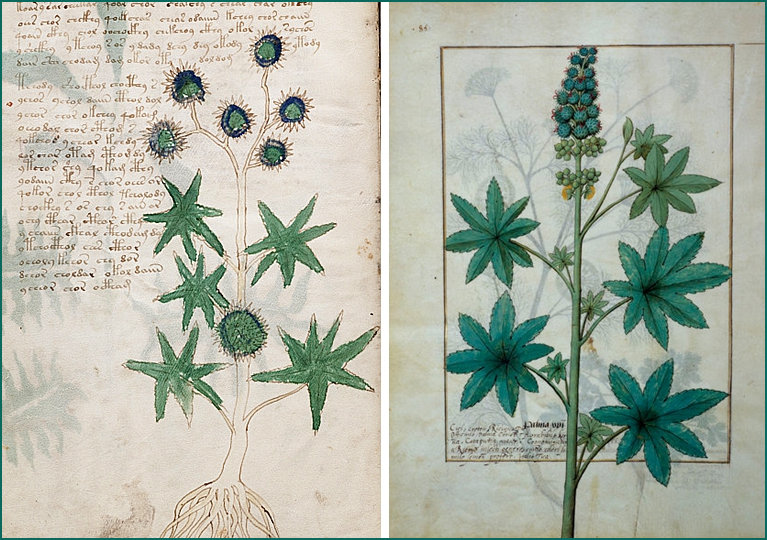

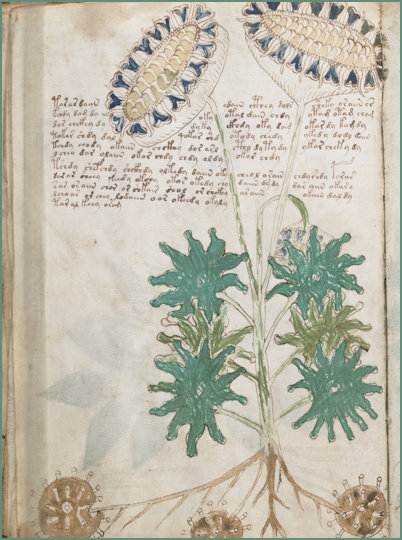
Examples of the fascinating herbal and floral annotations from the Voynich Manuscript
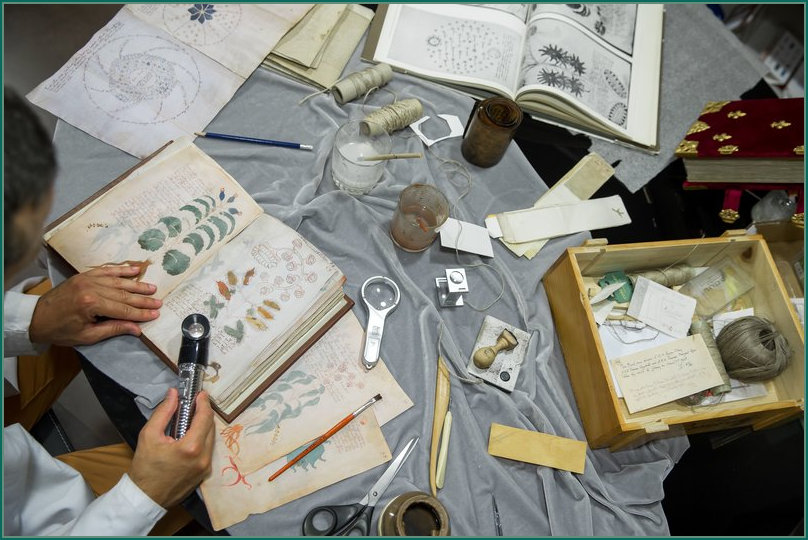
Coincidental to my writing about the manuscript, the Voynich is being prepared for re-publication (limited edition) and images are being taken from the original which is usually kept safe in the Yale University vault. "The 15th-century document is written in an unknown, apparently encrypted language that has defied every code breaker's efforts. It's illustrated with unknown or imaginary plants and never-seen constellations. The only copy is locked away at Yale University to protect the book; scans online are the closest most mortals can get to viewing its pages."
This extraordinary document is a cypher manuscript of unknown origins but may go as far back as 13th century England. It is filled with images of herbal and cosmological images and is considered 'mysterious.' It was shown to Roger Bacon and John Dee at the court of Rudolf who is rumoured to have paid 600 ducats for the item. Interestingly it was given to Bletchley staff to try and break the code after is re-surfaced in the early 20th century. They failed!

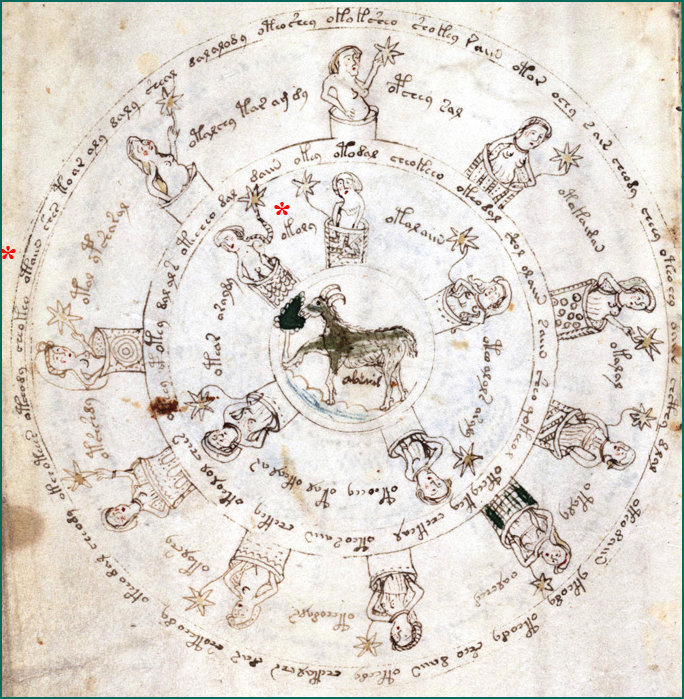
Two more examples from the Voynich manuscript denoting Bathing Beauties and some form of Astrological chart - the red asterisks show where to start reading the entries - it's all rather fascinating if bizarre.
Let us have a closer look at Prague during this time and immediately after the death of Rudolf because something must have prompted the prophesy!
Prague boasts its own Occult Museum and from this website comes the following :
"Prague is a city steeped in history both known and otherwise, and the darker side of the Czech capital's past is brought to light in evocative displays at The Museum of Alchemists and Magicians of Old Prague, which looks at some of the famous dabblers in the dark arts that have called the city home."
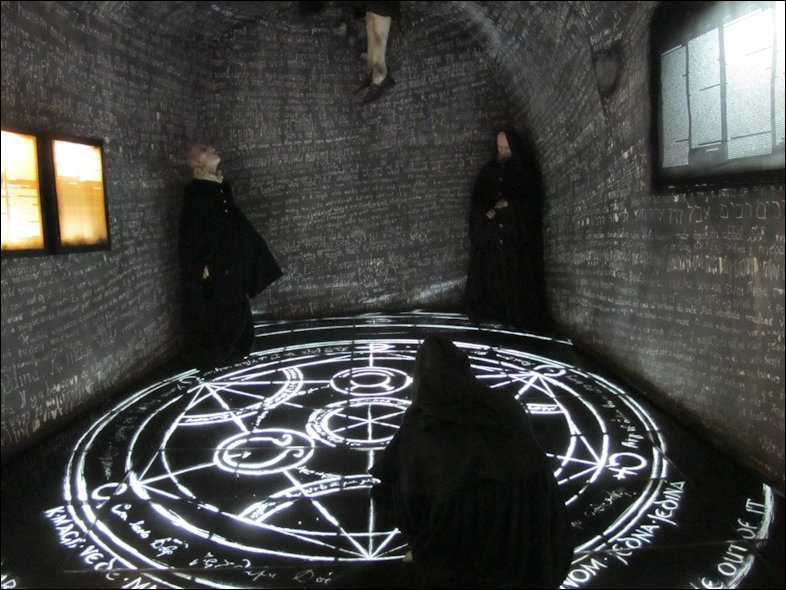
Imagery portraying alchemists and magicians - is it any wonder people were terrified? Image courtesy of the Occult Museum
Was Joffrey one of these 'dabblers' sometime between 1636 and 1648? I have chosen these dates as he will have been between 16 and 28 which will have given him ample time to create his own Palace de Gai Savoir in Toulouse and distance himself from the hostilities of the 'Thirty Year War.'
The website continues to tease us a little by stating "As king of much of eastern Europe and eventually Holy Roman Emperor during the 16th century, Rudolf II was not known as an especially effective ruler, but he is widely remembered for his interest and patronage of the occult arts. It was during his reign that he turned Prague into the unofficial capitol of the dark arts. Funding a number of alchemists and other so-called sorcerers, most notably the likes of Edward Kelley and John Dee, Rudolf created possibly the most active period of occult practice in history.
Whether or not his patrons were simply charlatans wrapped in mystery (which they probably were), or bold proto-scientists, the legacy of these magicians and madmen is remembered with a carnival flair at The Museum of Alchemists and Magicians of Old Prague."
I'd put money on the fact that if someone like Joffrey de Peyrac had existed and lived in that time he would have been a 'bold proto-scientist' but the time frame does not allow us to place Joffrey there, only for him to benefit from the knowledge accrued in Prague during the reign of Rudolf II.
The good thing about Rudolph is that he obviously had a sense of humour in addition to his great interest in the occult and all things herbal and curative - his favourite portrait of himself is depicted by the use of vegetables!
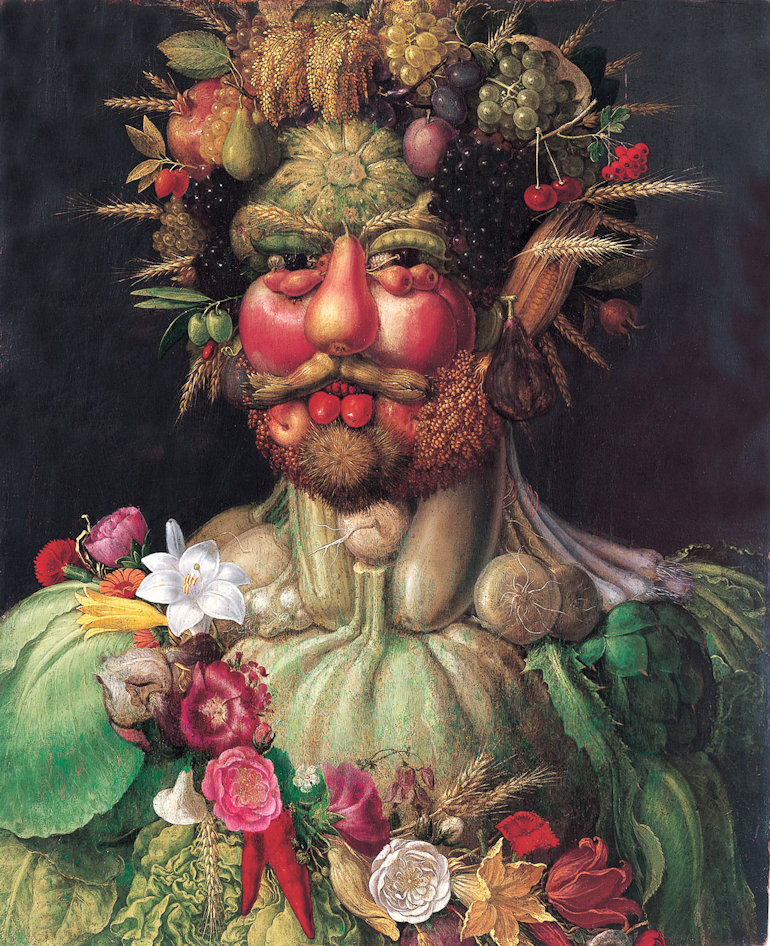
'Vertumnus' (Autumn) - Emperor Rudolph II by Giuseppe Arcimboldo - image and biography © of Giuseppe Arcimboldo.org
Before moving on to learn more about Arcimboldo who cannot simply be consigned to this page as an imaginative 'vegetable painter' a little more of the Rudolph's influence as a patron of the Arts as well as the Sciences and Occult shaping the way for the thought processes that could have influenced Joffrey de Peyrac. Extract from The Met - Timeline Art History -
"Described by a noted contemporary as “the greatest art patron in the world,” Rudolf II Habsburg (1552–1612), king of Hungary and Bohemia, and Holy Roman Emperor, raised court patronage in post-Renaissance Europe to a new level of breadth and extravagance. The thriving city and era over which he reigned, from 1583 until his death twenty-nine years later, is known as Rudolfine Prague. Prague became, under Rudolf’s guidance, one of the leading centres of the arts and sciences on the continent. His taste for outstanding decoration and fantastic imagery were legendary, while his ambition and insight as a patron and collector changed the way art would be viewed by future generations.
As the city once again became the political and cultural focus of the empire and Hradcany (formerly the Castle District) earned the status of a royal town, Rudolf II brought into his service some of the most important European artists, architects, scientists, philosophers, and humanists, turning Prague into what has been referred to as a “Parnassus of the arts.” The astronomers Tycho Brahe (1546–1601), who was made Imperial Mathematician in 1599, and Johannes Kepler (1571–1630), who first served as Brahe’s assistant and then succeeded him in 1601, established observatories in Prague. The emperor’s ambitions as an architectural patron are evidenced by his redesign and expansion of the castle, the construction of a new town hall and archbishop’s palace, and the commissioning of several new churches. Yet, it was in painting, sculpture, and the decorative arts that Rudolf’s impact was most celebrated and distinct. Among the artists who came to the imperial court were the painters Bartholomeus Spranger (Diana and Actaeon), Hans von Aachen, Pieter Stevens, and Roelandt Savery (Study of a Tree Trunk); the miniaturists Joris Hoefnagel (Insect Study) and his son Jacob Hoefnagel; the sculptor Adriaen de Vries (Apollo); the goldsmiths Paulus van Vianen and Wenzel Jamnitzer (Mirror Frame); and Aegidius Sadeler, who, as Imperial Printmaker (from 1597), popularized the emperor’s image and disseminated knowledge of his artists’ works. Foreign artists were especially prized by Rudolf because they gave international weight to his domain and satisfied his taste in art — forItalian and Netherlandish work , in particular, fostered at the Habsburg court in Spain, where he was educated.
The intricate and colorful allegorical portraits of Rudolf II painted by Giuseppe Arcimboldo point to the direct collaboration that took place between artists and scholars. Rudolf also amassed a collection of paintings numbering in the thousands. Italian works were common, including those by Paolo Veronese (Mars and Venus United by Love), Correggio, and Leonardo da Vinci; as were works by Northern European masters, including Albrecht Dürer and Pieter Bruegel the Elder."
About Arcimboldo :
"Giuseppe Arcimboldo was born in Milan in 1527, the son of Biagio, a painter who did work for the office of the Fabbrica in the Duomo. Arcimboldo was commissioned to do stained glass window designs beginning in 1549, including the Stories of St. Catherine of Alexandria vitrage at the Duomo. In 1556 he worked with Giuseppe Meda on frescoes for the Cathedral of Monza. In 1558, he drew the cartoon for a large tapestry of the Dormition of the Virgin Mary, which still hangs in the Como Cathedral today.
In 1562 he became court portraitist to Ferdinand I at the Habsburg court in Vienna, and later, to Maximilian II and his son Rudolf II at the court in Prague. He was also the court decorator and costume designer. King Augustus of Saxony, who visited Vienna in 1570 and 1573, saw Arcimboldo's work and commissioned a copy of his "The Four Seasons" which incorporates his own monarchic symbols.
Arcimboldo's conventional work, on traditional religious subjects, has fallen into oblivion, but his portraits of human heads made up of vegetables, fruit and tree roots, were greatly admired by his contemporaries and remain a source of fascination today. Art critics debate whether these paintings were whimsical or the product of a deranged mind. A majority of scholars hold to the view, however, that given the Renaissance fascination with riddles, puzzles, and the bizarre (see, for example, the grotesque heads of Leonardo da Vinci, a fellow Milanese), Arcimboldo, far from being mentally imbalanced, catered to the taste of his times. Arcimboldo died in Milan, to which he retired after leaving the Habsburg service. It was during this last phase of his career that he produced the composite portrait of Rudolph II, as well as his self-portrait as the Four Seasons. His Italian contemporaries honoured him with poetry and manuscripts celebrating his illustrious career. His hidden-face still-lives are a possible influence on his younger Lombard contemporary Caravaggio, whose painting of fruit in the Brera museum in Milan ranks as one of the earliest independent still-lives.
When the Swedish army invaded Prague in 1648, during the Thirty Years' War, many of Arcimboldo's paintings were taken from Rudolf II's collection."
So now we have to assume Joffrey did not want to be away from his own sovereign territory during these hostilities and will have left Prague to seek a safer port ......
The original Thirty Years War, which broke out in 1618 should have meant Prague was peaceful once more by 1678 despite the late Swedish invasion in 1648 - this time frame has both Angélique and Joffrey enjoying the - oh what a coincidence - intrigues of Salem! The serious so-called 'Witch Trials' didn't start until 1692 by which time we can assume that the Peyracs will be back in France after witnessing the Revocation of the Edict of Nantes, maybe even living happily ever after? No, they are far too restless characters to even contemplate retirement! And, I think the Revocation would cause a greater rift between Angélique and the King rather than reconcile them! Maybe they will remove themselves, lock, stock and barrel back to the New World and renounce all the titles including the contentious Toulouse.
Back to Prague in 1689 - four years prior to the Revocation, three years prior to the serious Salem Witch Trials, a decade or so after the end of the Thirty Years War - the great Ghetto fire attributed to a French arsonist :
From Old Prague.com - "The second half of the 17th century saw a vast inflow of people, particularly in connection with the danger posed by the Turks and the expulsion of Jews from Vienna in 1670. Amounting to 11,000 inhabitants, the Prague ghetto constituted one of the most densely populated Jewish quarters in Europe at that time. However, before the end of the century the time of prosperity, expansion and new housing projects was terminated bitterly by two major catastrophes. In 1680 the overpopulated ghetto was decimated by a plague epidemic and nine years after this disaster it completely burnt down.
In July 1689 an allegedly French arsonist set fire to Kaprová Street in the Old Town. The conflagration spread to the entire Jewish Town, where all 318 buildings burnt down, in the adjoining areas of the Old Town, however, even more buildings were destroyed."
The Yivo Encyclopadia covers the fire of 1689 but does NOT attribute the fire to the French.
Taking into account all the information gathered on this page what might we, as the readers, deduce or even conclude about the stark warning to 'beware Prague.' Could this insidious plot have been designed by Louis XIV to wash his hands of the Peyracs once and for all by branding them as arsonists? To allow appropriate justice to be served, would he allow his subjects to be tried by the Prague authorities thus absolving himself of all culpability?
It's all a bit far-fetched really - at the end of the day if Louis had wanted to get rid of Joffrey - he would have done it by the end of the first half of Book 1 and not allowed him to escape what appeared to be a very public burning! The thirty years war was over in a shorter time than a proposed vendetta by the King against one of his noblemen. Whatever the reason for the prophesy it's been a lot of fun researching this and coming up with a possible alternative!
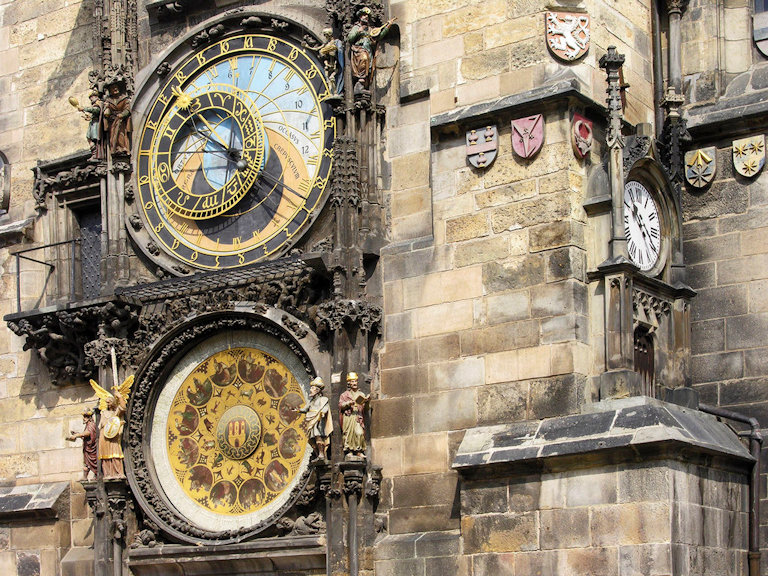
The Astronomical Clock in Prague - courtesy of the World Encyclopaedia
This remarkable construction would certainly have been of interest to Joffrey. The Czech Tourist Board describe the clock's origins as 'Legends about the origins of the Prague Astronomical Clock are many. The most famous one, however, is that it was built by Master Hanuš in 1410. The city councillors at that time were so delighted with the clock that they later began to fear that Master Hanuš would build one like it for another European city. Therefore one dark night they had him blinded, and thus the wondrous clock remained only in Prague. Whether or not this legend is true, what is certain is that at the top of every hour figures on the sides of the clock become animated and two windows open up to reveal 12 apostles greeting the city. On the sides of the clock you’ll see a skeleton ringing a bell, a Turk shaking his head, a miser with a purse full of money, and Vanity looking in a mirror. The whole performance ends with the crowing of a golden rooster and the ringing of the huge bell at the top of the tower. It is also said that at the first cock-crow in the morning the ghosts and devils flee from Prague.'
The story has a similar ring of jealousy found often in Eastern European cities - my favourite church in Kraków, Poland - the Kościół Mariacki (St. Mary's) in the town square has two brothers competing to create the most beautiful towers as a crowning glory to Our Lady.
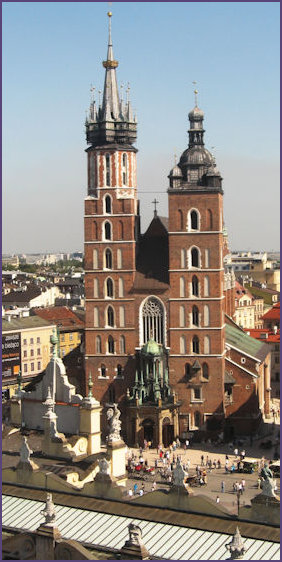
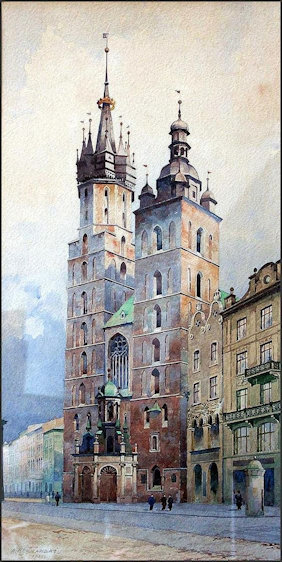
Two views of the historic church in Kraków - a contemporary photograph and a 1932 watercolour by A. Kramarski
One brother designs the ethereal tower with a crown to denote Mary's place as the Queen of Heaven. The other brother, seeing his design, kills him in a frenzy of jealousy and claims the design as his own. As no second design of any sort was ever found it looks as though the corresponding tower has been merely 'capped'. It is said the knife that was used to commit the sibling murder hangs in the Sukennice (Cloth Halls) - as a result of this we may have to accept the legend of Master Hanuš in the same light - it could have happened as portrayed in the legends. St. Mary's Church houses one of the greatest and profoundly beautiful altar triptychs of all time carved by Wit Stworz (Veit Stoss).
Then comes - the 'Real history of the Astronomical Clock' from prague.cz
The real author of the clock was discovered in 1961 in an old document, which describes the astronomical dial and says it was made by Mikulas of Kadan in 1410. He probably cooperated with the astronomer and Charles University professor Jan Sindel. The Astronomical Clock was repaired and improved by Jan Taborsky in the 16 th century. However, it became very faulty as time went by, and it was mostly out of order. It was even considered whether it should be liquidated in the 1780s. The clock soon stopped working for a long time.
The major repair was inevitable and it came in 1865. The clock was modernized and a new Calendar Dial was painted by Josef Manes. In 1945 the German army damaged the Astronomical Clock and some of the statues burned. They were replaced by replicas later, and the striking of the clock was changed from the Old Czech Time to the Central European Time. The Astronomical Clock consists of the windows with apostles at the top, the Astronomical Dial, which is the oldest part, the Calendar Dial underneath and various sculptures around.
We can speculate from these dates that the clock may have been in good working order, following repairs, at the time Joffrey was told to beware Prague.
Link to Angélique by one of her fans - Doris Nußbaumer
For those of you who follow my meanderings on this website - you know that I am a bit fan of 'coincidence'. Having just published this revised page the following came from Doris :
"I'll read your Prague essay later this evening, we're leaving for a walk right now. I just had to react now because I'm very impressed by Arcimboldo. Some years ago I visited a great Arcimboldo exhibition in "Kunsthistorisches Museum Wien". They put mirrors under the pictures which should be also seen upside down. Once in school our arts teacher made us collect autumn things, leaves, twigs, stones... He wouldn't say why. Then he showed us Vertumnus and told us to use our things and paint a self-portrait in this style. My Mum framed mine, it's still on the wall of her living room." (15th August 2016)
With luck - the image created by Doris should appear here soon with her permission.
Page updated : 31st July 2019 (G)
